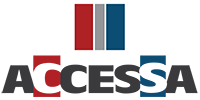A game to win
Recently, billionaire and technology magnate, Bill Gates, subjected himself to an open game of chess with the newly crowned world champion (23-year-old Norwegian, Magnus Carlson). Save publicity, I’m not sure what the motive was because Bill was greased in exactly 1 minute, 20 seconds—after just nine moves of chess. Always the pragmatic, Gates told the audience during the first couple of moves, that he was under “no illusions” … this game has “a predetermined outcome.” Moments later, in an obviously lame last move, he uttered “Oh, shoot.”
Gates played the game well nonetheless. He quelled all anxieties in the room using a predictive method. He knew his outcomes when he started; he did not try to alter, stop or slow the game to prevent what he knew was imminent and, he enjoyed the process—otherwise he would’ve never agreed to be humiliated so. He’s a smart guy. By accepting the challenge, he also knew he would not (could not) exceed a point of diminishing returns on his investment. He had all the information he needed. He was in control.
Choose your game with as much thought. Maximizing shop performance can be just as satisfying, predictable and rewarding as Bill’s lousy chess game. You just can’t have any illusions about maintenance to actually win.
Protocol’s fine; autopilot, NOT
In the last IB post “26 News bits, on trend”, I offered an array of insight for its predictive value. Each factoid could be a signal of a trending change. The overarching message: keep informed, keep your mind and the business out of automatic mode … and out of trouble.
Apparently, long hours of flying in “autopilot” dulls the skills of airline pilots and flight crew. Great news eh? This was the observation made by a U.S. advisory committee, working under the Federal Aviation Administration. (Source: CNN)
Controlling every detail in your shop is key to your ability to be competitive, profitable and sustainable. Protocols are dandy—I’ll always support process— but they should also include periodic review and scrutiny.
Without regular audits acuity is dulled. The process itself will mask reality and change the questions when you rely on autopilot. When something’s out of sight and out of mind, like proper machine/tool lubrication for example, it will show up later as the weak link that brought production to an unplanned halt.
Make it your vision to maintain utility systems equipment and production machinery as close to new condition as possible. Always be ready to start up and run. Make shutdowns rare and plan them carefully.
Factor this into your spec
Faced with ever increasing new challenges, we’ll always need new ways to meet tighter customer specifications and the shortened lead times buyers demand.
Of course, what’s mostly predictable is the growing list of governmental, social and environmental enforcers. The regulations that limit industrial waste and the emissions that are created in some lubricants such as volatile organic compounds (VOCs) require state-of-the-art formulas, dispensers and expert advice for each specific application. And beware. Statistical process control principles as well as computerized maintenance management systems (CMMS) are hard to beat, but you still have to have the right specifications and the most relevant and current data in place before you can reap the benefit.
New machine? The bearings that will carry the brunt of the load are often manufactured for that machine with generic lubricants—I’m sure you can appreciate the machine manufacturer’s dilemma. With your specific conditions, certain lubricants can break down before the bearings themselves. Besides the above-mentioned industrial waste and emissions issues we have to also consider the heat, humidity, corrosion and, the ingress of contaminants to name a few. Predictive maintenance would advise changing (at least checking) all lubrication specifications as soon as possible in order to keep the shop running to every expectation. Better yet, include exacting lubrication requirements when you order. Otherwise, your best bet is to relubricate the new bearings. At minimum, check with the machine manufacturer before needlessly scrapping and replacing bearings altogether.
Last word
Lubrication is critical to the performance and life of anything that moves. Like trends, machine wear starts at the microscopic level and before you know it you have a tsunami.
Seizures are ugly and downtime is even more expensive when it’s unplanned. Facing that situation, machine repair, and the replacement parts order that ensues, come at the grace of an already challenged supply chain.
Predictive maintenance is a design that gives you the control to allow convenient scheduling of corrective maintenance. Played right, it will also help you prevent the calamity of unexpected equipment failures yielding substantial cost savings and even more reliability.
If you depend upon machines, consider proper lubrication the most critical system you rely on to stay in the game. The key to predictability is ultimately having the right information at the right time. It’s now your move.
HIT Solutions believes the more your business keeps up with important trends, the more you will improve your product, and improve your bottom line.
Leave me your comments below; share your thoughts.
